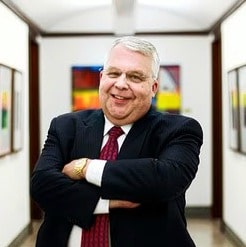
This is Part 2 of our interview (read Part 1 HERE) with Randy Michaels. Michaels is a radio encyclopedia, and that includes understanding the history and, perhaps, the future of the AM band. We asked him to give us his opinion on the FCC’s plan to let smaller AM stations maintain power at night, which will lead to interference with the larger Class A clear channels. He says the band is doomed.
RI: Some PDs in small and medium markets are saying this is the right thing because now they will be able to serve their cities where they had to reduce power before?
Michaels: Look, that argument is partially true, but let’s follow the logic. There was great debate in the 30s and 40s about daytime-only stations. It was pointed out repeatedly that nighttime in the northern latitudes means until 7 or 8 in the morning and 4 or 4:30 in the afternoon. That’s both drive times and these stations are going to be disadvantaged, and everyone said, “No, we want them.” Now they are saying, “Well, this isn’t fair. We want nighttime too.” So, yes. Just like when the regional channels got some limited power, they provide some service. But the amount of interference created to the amount of service created is going to be in the order of, depends on the situation, 10 to one, 50 to one. In other words, they are going to wipe out hundreds of thousands of square miles of service to create maybe a few square miles of service for a local community that’s almost certainly adequately served by half a dozen FMs. There are very few AM stations that are still useful. We are about to destroy them. Then, I don’t know what the band is good for. I understand why they’re saying “I’ve got 1,000 watts in daytime-only and I am 50 watts at night. Why can’t I get 1,000 watts all the time?” The answer is, listen to one of the local channels. In the Northeast, the Midwest, if you turn on one of the former local channels, the Class D channels, they might go three or four miles at night. That’s what’s going to happen to every channel if you do this.
RI: Is there any real way for the FCC to fix the interference on the AM band?
Michaels: Fewer stations. The FCC determined in 1927 that the band could hold 400 stations. With directional antennas and further advances, they got that up into the high six to seven to 800. And service was pretty good. Then came the 1960s and the 10% rule. You just can’t put this many stations on the AM band and have any kind of real service. Are there answers? Sure. You could do signal frequency networks, you could allow stations to buy out others on the channel for a lower night limit. Politically, the number of little stations that don’t cover their markets is far greater than the number of stations that do. I believe the politics have cast the die and politics will triumph over physics and the stations that have the chance to compete are about to lose that opportunity because somehow it doesn’t seem fair. The truth is, the FCC abandoned their mandate about the time they enacted the 10% rule and stopped worrying about interference and started worrying about the political pressure to add more stations.
RI: How do you see this playing out?
Michaels: I think they’re going to break down the clear channel stations. I think the few remaining viable AM stations will be hurt. And frankly, I think if you have an AM station and you can get anything for it, this would be a good time, because I think the band is doomed, and that has far more to do with politics than physics. I think if you put something interesting, compelling, difficult to duplicate, on an AM station that covers the market, people will go there.
RI: Does anyone listen to AM radio anymore, especially with the way it sounds?
Michaels: If there’s a reason to do it. I got caught in a snowstorm in southern Kentucky. The only station covering it was WLW out of Cincinnati, 180 miles away. I’m glad they were there. They actually still have a newsroom. Do I think people are listening to that band? I will say this, in certain parts of the country, no. In parts of the country where AM signals still cover the market, yes. WLW, which I helped reformat, has been number one for I don’t know how many years and doesn’t show any signs of stopping — this will do it. When you can’t hear morning drive all over the market, this will do it.






While fewer stations may be the answer, especially at night, this plan might turn out to be the we get there. It would be a tough go for awhile.
By the way, the “local” channels are populated by Class C stations, not Class D. Think D for daytimer. I can understand the confusion since they used to be called Class IV. Why the switcheroo from 4th place to 3rd beats me.
Thanks for the article. Always good to know Mr. Michaels’s take.
You really had to look for Part Two…probably the reason.
Do these comments work anymore? Can’t believe there’s no comments on this yet.